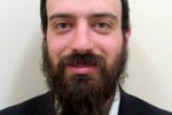Question: In my family, the opening prayer for Yom Kippur, Kol Nidrei, has always been a big deal. We join our friends in shul and stand in angelic white as the Torahs are taken from the Ark and the chazzan sings the Kol Nidrei prayer in that ancient, haunting melody. This year I decided to try and understand the words that we are saying at this intense moment. I expected to find really meaningful words, maybe us begging G-d for forgiveness or perhaps words expressing our desire to repent. To my great surprise I found that Kol Nidrei seems to be nothing more than a very technical, legalistic annulment of vows and prohibitions which we may have committed ourselves to in the past or may commit ourselves to in the coming year. Not very inspiring. Could our sages not find something more meaningful to set the tone for the holy day of Yom Kippur?
Answer: Though the Kol Nidrei prayer existed prior to the fifteenth century, many scholars attribute the heart-rending tune in which it is sung in shuls around the world to the Marranos of Spain. Because of the pressures of the Spanish Inquisition, these Jews had to outwardly adopt Christianity. This was only a farce because these Jews never gave up their faith. Hidden from the public eye, at every available opportunity, they continued to practice Judaism. On the night of Yom Kippur, at great risk, they would gather in underground cellars and bunkers to recite the Yom Kippur prayers with their fellow Jews. At the very outset they wanted to make it clear that all pledges of allegiance or commitments to foreign gods were null and void, nothing more than succumbing to social pressures. Their true identity was the one that appeared in shul on Yom Kippur and remained steadfastly committed to Judaism.
Yom Kippur was the only day of the year when the high priest would enter the Holy of Holies in the Temple. We too have our Holy of Holies - a place within us which notwithstanding the clutter and challenges of everyday life, remains fully intact and committed to G-d. This is the "yiddisher hartz", the "pintele yid", that intrinsic Jewish spark within us that will always remain beyond any form of contamination or devaluation. This personal "holy of Holies" becomes totally accessible to each one of us on Yom Kippur.
Like the Marranos, right at the very beginning of this intense day we want to make it clear that though we too may have lived somewhat of a double life throughout the year and that we too may have at times pledged allegiance to things foreign to Judaism, binding ourselves to practices contrary to the Torah - all that is not the true us. All that was made under duress, it was all unintended. The true Jew is the one that stands here in shul, loyal and committed to Judaism. We ask G-d to focus on our true-selves - that untouchable part, not subject to filth or contamination and overlook any wrongdoing because it doesn't represent what we really are.
You may be wondering - if we're all intrinsically perfect and all we have to do is to ask G-d to focus on that part of us - the real us - why bother spending the day fasting and praying our hearts out?
The Marranos and their history provide us with the answer to that question too because while it clear that the Marrranos had a fiery spark within, what remains of them today? Maybe some descendants in Spain and South America lighting candles on Friday without knowing what they're doing, but no real Judaism. The Marranos faced incredible hardships and we cannot judge them but what we can learn from them is that just having the " yiddishe hartz", that spark within us, is not enough to transmit our Judaism to the next generation. Judaism is a hands-on religion. Our "Jewish spark" will do its part by providing us with soul-feeling and inspiration but we've got to allow that inspiration to penetrate our daily lives by performing small, yet concrete and tangible mitzvoth.
Wishing you a gmar chatimah tova and well over the fast.
Don't Be A Marrano

 Rabbi Yaacov Chaiton
Rabbi Yaacov Chaiton